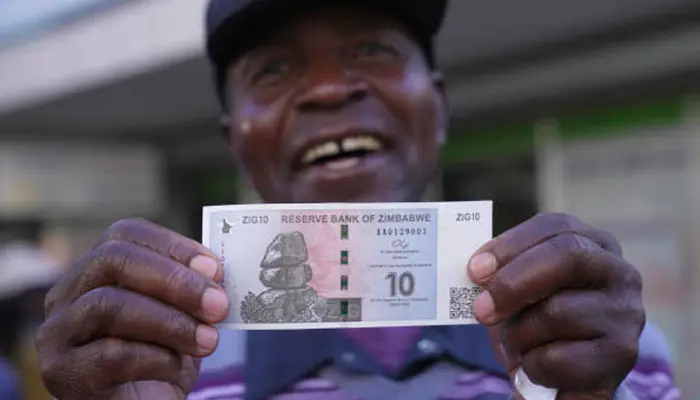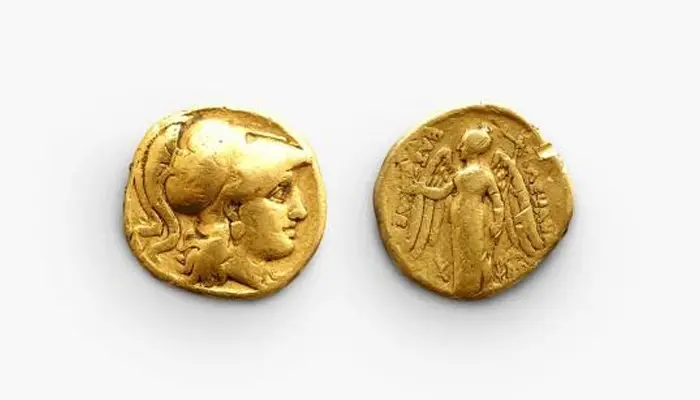Zimbabwe's ZiG Sparks Global Interest in the Return to the Gold Standard: What is it?- Learn Here
- Admin
- 1 year ago
- 4 minutes read

Zimbabwe's new gold-backed currency, ZiG, entered circulation on Tuesday, aiming to stabilize the economy amid persistent inflation. ZiG made its electronic debut in April before transitioning into physical banknotes and coins. This marks the country's sixth currency attempt since the collapse of the Zimbabwe dollar in 2009, which saw hyperinflation soar to 5 billion percent. Initially reliant on the U.S. dollar, its usage fluctuated due to bans and reinstatements. ZiG's introduction underscores ongoing economic struggles and the authorities' efforts to restore stability.

What is Gold-backed Currency or Gold Standard?
Gold-backed currency, once a cornerstone of the global monetary system, is experiencing a resurgence in the face of economic uncertainty. As central banks and governments seek alternatives to fiat currencies, the allure of gold as a store of value has regained prominence. In this article, we explore the concept of gold-backed currency, its historical significance, and its potential to offer stability in tumultuous economic times.
A Brief History of Gold as Money
Gold has been used as a medium of exchange for centuries, prized for its rarity, durability, and intrinsic value. Ancient civilizations such as the Greeks, Romans, and Egyptians minted gold coins for trade, establishing gold as a universal form of money. The gold standard emerged in the 19th century, linking the value of a country's currency to a specific amount of gold. This system provided stability and confidence in monetary transactions, anchoring economies around the world.
The Rise and Fall of the Gold Standard
The gold standard reached its peak in the late 19th and early 20th centuries, with many countries adopting it as the basis for their monetary systems. However, the system began to unravel following World War I, as governments printed more money than they had in gold reserves, leading to currency devaluations and economic instability. The Great Depression further strained the gold standard, prompting countries to abandon it in favor of fiat currencies.
The Resurgence of Gold-Backed Currency
In recent years, concerns about fiat currencies' stability and the impact of central bank policies have reignited interest in gold-backed currency. Countries like China and Russia have been increasing their gold reserves, signaling a shift towards a more gold-centric monetary system. Additionally, the rise of cryptocurrencies has sparked discussions about creating digital gold-backed currencies, combining the stability of gold with the convenience of digital transactions.
Benefits of Gold-Backed Currency
One of the primary benefits of gold-backed currency is its intrinsic value, derived from the scarcity and desirability of gold. Unlike fiat currencies, which are susceptible to inflation and government manipulation, gold maintains its value over time. This stability can protect against currency devaluations, financial crises, and geopolitical uncertainties, providing a safe haven for investors and preserving wealth.
Challenges and Considerations
While gold-backed currency offers numerous benefits, it also presents challenges and considerations. One of the main challenges is ensuring an adequate supply of gold to back the currency, as gold production is limited and subject to market fluctuations. Additionally, the transition from fiat currencies to gold-backed currency would require significant coordination among governments, central banks, and financial institutions, posing logistical and political challenges.

Gold-backed currency represents a beacon of stability in an increasingly volatile economic landscape. Its historical significance, intrinsic value, and potential to safeguard against financial turmoil make it an attractive alternative to fiat currencies. While challenges remain, the resurgence of interest in gold-backed currency reflects a growing desire for stability and security in monetary affairs. Whether as a physical asset or a digital token, gold-backed currency has the potential to reshape the future of money, offering reassurance to individuals and institutions alike. As uncertainties persist, the timeless allure of gold shines brightly as a symbol of enduring value and stability.














